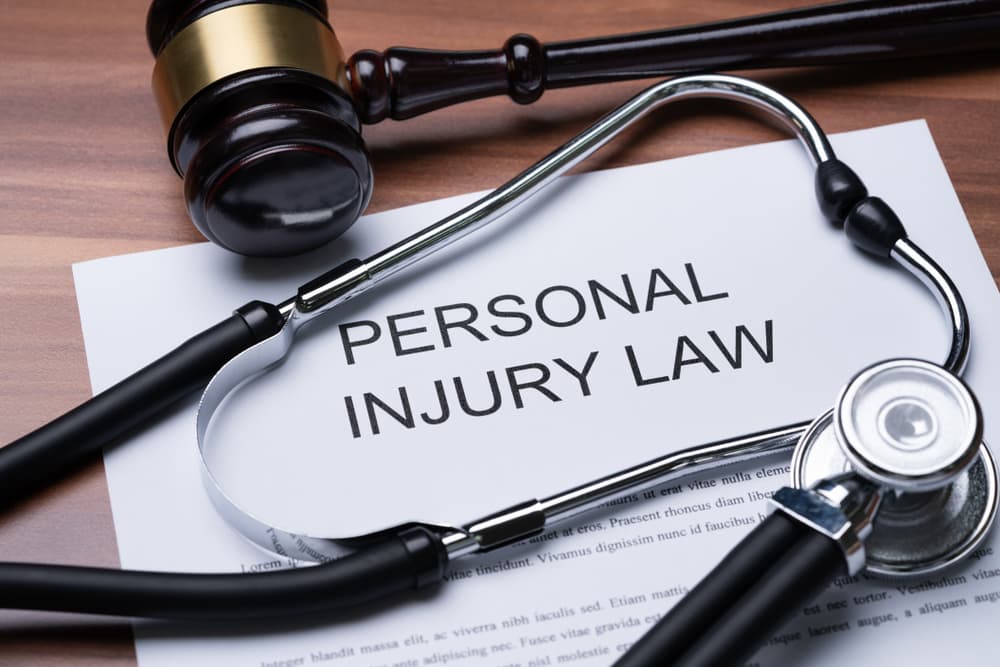When people violate traffic laws, fail to maintain their promises, or commit other negligent acts, they can bring about serious accidents and injuries. In addition to recovering compensation for economic damages, like lost income and medical expenses, injured accident victims may also receive compensation for their past and anticipated pain and suffering.
If you suffered injuries and pain in an occurrence resulting from someone else’s negligence, you have legal options available. A skilled personal injury lawyer in your area can discuss the circumstances of the occurrence with you, determine your options, and file a personal injury claim or lawsuit on your behalf. Throughout the process, your lawyer will aggressively advocate for your interests and work to maximize both your economic and non-economic recovery.
Determining Pain and Suffering Damages in Personal Injury Claims
In a personal injury case, pain and suffering damages aim to compensate victims for the physical and emotional distress they endured as a direct result of their injuries. There are several main types of pain and suffering damages available, and calculating these damages involves considering various factors related to the severity and effects of the injuries.
- Physical Pain — This type of pain and suffering refers to the actual physical discomfort the victim experienced as a result of their injuries. It includes pain from injuries themselves, as well as any ongoing pain during recovery or chronic pain that persists after the initial healing period.
- Emotional Distress— Emotional distress encompasses the psychological effects of the injury on the victim’s mental and emotional well-being. This may include feelings of anxiety, depression, fear, or trauma due to the injury and its consequences.
- Loss of Enjoyment of Life — This type of damage compensates for the diminished ability to engage in activities and experiences that the victim enjoyed before the injury. Whether it’s hobbies, social activities, or other aspects of life that are now limited or impossible due to the injury, the victim can seek compensation for this loss.
- Loss of Consortium — In cases where the injury affects relationships with family members or spouses, the victim may pursue loss of consortium damages. This type of damage compensates for the repercussions of the injury on the victim’s ability to provide companionship, support, and intimacy to their loved ones.
Calculating pain and suffering damages involves assessing various factors to determine the extent of the harm the victim suffered. These factors may include:

- Severity of Damages — The more severe and debilitating the injuries, the higher the potential for pain and suffering damages. This includes considering the type of injury, its extent, and the prognosis for recovery.
- Duration of Suffering — The length of time the victim experiences pain, discomfort, and emotional distress is a key factor in calculating damages. Chronic pain or long-term emotional trauma may warrant higher compensation.
- Effects on Daily Life — The extent to which the injury affects the victim’s ability to perform daily activities, work, and enjoy life is another consideration. This includes any limitations or disabilities resulting from the injury.
- Expert Testimony — Medical experts, psychologists, or other professionals may provide testimony or evidence regarding the nature and repercussions of the victim’s pain and suffering, helping to quantify damages.
Calculating these damages involves a thorough assessment of the effect of an injury on the victim’s life and well-being. A skilled personal injury attorney can evaluate the likely settlement or verdict value of your case, determine your legal options, and help you select the best option for your case and circumstances.
How to Prove Pain and Suffering Damages in a Personal Injury Claim or Lawsuit

Proving pain and suffering damages in a personal injury case requires gathering evidence and presenting legal arguments to demonstrate the extent of the victim’s physical and emotional distress. Several legal elements must be established to successfully prove these damages in court.
First, it is essential to establish the extent and severity of the injuries the victim suffered. This often involves medical records, diagnostic tests, and expert testimony from healthcare providers who can attest to the nature and effects of the injuries. Documentation of treatments received, medications prescribed, and any ongoing symptoms or complications is crucial in illustrating the physical pain the victim endured.
Secondly, evidence of the emotional distress the injury caused is essential. This may include testimony from the victim, family members, or mental health professionals regarding the psychological repercussions of the injury on the victim’s well-being. Witness statements, journals documenting emotional struggles, or records of therapy sessions can help support claims of emotional distress.
Another key element in proving pain and suffering damages is demonstrating the effects of the injury on the victim’s daily life and activities. This can be achieved through testimony from the victim, friends, or coworkers regarding changes in the victim’s ability to perform tasks, engage in hobbies, or participate in social activities. Documentation of missed work, reduced productivity, or the need for assistance with daily tasks can further support these claims.
In addition to these legal elements, certain types of evidence can be particularly helpful in proving pain and suffering damages. Photographs or videos of visible injuries, such as bruises, scars, or mobility limitations, can provide visual evidence of the physical toll of the injury. Testimony from friends or family members who have witnessed the victim’s struggles and hardships can also be persuasive in illustrating the effects of the injury.
Furthermore, expert testimony from medical professionals, psychologists, or vocational experts can support claims of pain and suffering. These experts can provide insight into the long-term consequences of the injury on the victim’s physical and emotional well-being, as well as its effects on their ability to work and function in daily life.
Successfully proving pain and suffering damages in a personal injury case requires a thorough presentation of evidence and legal arguments to establish the extent of the victim’s physical and emotional distress. By gathering compelling evidence and presenting persuasive testimony, victims can seek fair compensation for the hardships they endured as a direct result of their injuries.
What Economic Damages Are Available in a Personal Injury Case?

In addition to pain and suffering damages, a personal injury claim should also seek compensation for all the economic damages a victim suffered. While these damages are more easily quantifiable, they can still be the subject of dispute in many claims.
- Medical expenses are a primary portion of economic damages in personal injury cases. This includes costs associated with hospitalization, surgery, medication, rehabilitation therapy, and any other necessary medical treatments or procedures. Victims are entitled to reimbursement for past medical expenses as well as compensation for estimated future medical costs related to the injury.
- Lost income is another significant component of economic damages. When injuries prevent victims from working or result in reduced earning capacity, they may be entitled to compensation for lost income, including missed work time, lost bonuses or commissions, and diminished earning potential in the future.
- Property damage is relevant in cases involving motor vehicle accidents or other incidents where personal property becomes damaged or destroyed. Victims can seek compensation for the repair or replacement of damaged property, such as vehicles, clothing, or personal belongings.
- In some cases, victims may incur additional expenses as a result of their injuries, such as transportation costs for medical appointments, home modifications to accommodate disabilities, or the need for household help or caregiving services. These expenses are also economic damages and may be recoverable in a personal injury claim.
A skilled personal injury attorney can determine your eligibility for these various types of economic damages. Your lawyer can then file a claim or lawsuit, negotiate with insurance companies on your behalf, and work to maximize the compensation you receive for economic damages – either through a favorable settlement offer or litigation result in court.
Types of Negligence That Can Lead to a Personal Injury Case
Personal injury cases can arise from a variety of situations where others’ negligence leads to harm. Identifying who was negligent means identifying who should cover your non-economic and economic damages.
- Motor vehicle accidents are a common cause of personal injury cases. Negligent actions such as speeding, reckless driving, drunk driving, or distracted driving can lead to collisions, resulting in injuries to drivers, passengers, or pedestrians.
- Pedestrian accidents occur when drivers fail to yield the right-of-way, disobey traffic signals, or drive recklessly in areas where pedestrians are present. These accidents often result in serious injuries or even fatalities for pedestrians who are vulnerable to the impact of a vehicle.
- Defective products can cause injuries when they fail to perform as intended or have inherent design flaws. Manufacturers, distributors, and sellers can be liable for injuries their defective products cause, whether due to faulty design, manufacturing errors, or inadequate warnings.
- Dog bites are another common cause of personal injury cases. Owners have a responsibility to control their pets and prevent them from causing harm to others. When a dog attacks and injures someone, the owner may be liable for the victim’s injuries and damages.
- Wrongful death cases arise when someone’s negligence results in the death of another person. This can occur in various contexts, such as motor vehicle accidents, medical malpractice, or workplace accidents. Family members of the deceased may pursue a wrongful death claim to seek compensation for their loss.
- Premises accidents occur on another person’s property due to hazardous conditions or negligence by the property owner. Slip-and-fall accidents, inadequate security leading to assaults, or dangerous conditions such as broken stairs or icy sidewalks can result in injuries to visitors or guests.
Common Personal Injuries

Injuries resulting from negligence by others can vary widely in severity and type, often requiring specific medical treatments for recovery.
One of the most common types of injuries is whiplash, often resulting from motor vehicle accidents. Whiplash occurs when the neck forcefully jerks back and forth, causing strain to the muscles and ligaments. Treatment typically involves rest, pain medication, physical therapy, and possibly chiropractic care to alleviate symptoms and restore mobility.
Fractures, or broken bones, are another common result of negligence, particularly in accidents such as falls or collisions. Treatment for fractures depends on the severity and location of the break but may include immobilization with a cast or brace, surgery to realign the bones, and physical therapy to regain strength and range of motion.
Traumatic brain injuries (TBIs) can occur in accidents where the head sustains a blow or jolt. TBIs can range from mild concussions to severe brain damage, requiring immediate medical attention. Treatment may include monitoring for complications, medication to reduce swelling or prevent seizures, rehabilitation therapy, and cognitive rehabilitation to address memory or thinking problems.
Soft tissue injuries such as sprains, strains, and bruises are common in various accidents, including slips and falls or sports-related incidents. Treatment typically involves rest, ice, compression, and elevation (RICE), along with pain medication and physical therapy to promote healing and restore function.
Spinal cord injuries can have serious consequences, potentially causing paralysis or loss of sensation below the injury site. Treatment may involve immobilization with a brace or traction, surgery to stabilize the spine, and rehabilitation therapy to improve function and quality of life.
Burn injuries can occur in fires, chemical exposures, or electrical accidents, resulting in damage to the skin and underlying tissues. Treatment depends on the severity and extent of the burns but may include wound care, skin grafting, pain management, and rehabilitation to minimize scarring and restore function.
Seeking prompt medical attention and appropriate treatment is crucial for recovery and may also be necessary for pursuing a personal injury claim to seek compensation for damages incurred.
Talk with an Experienced Personal Injury Lawyer Near You Today
If you suffered injuries, pain, and suffering in an accident due to someone else’s negligence, a knowledgeable personal injury attorney at the Alexander Law Group, LLP in your jurisdiction can help you recover the full compensation you need. Never try to negotiate with the insurance company yourself. Your lawyer can gather evidence on your behalf, negotiate aggressively with insurance companies, and pursue the pain and suffering compensation you need to become whole again after your accident.


